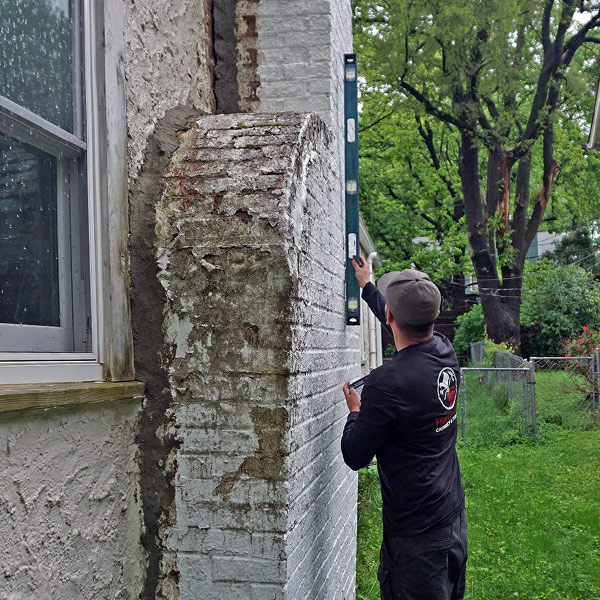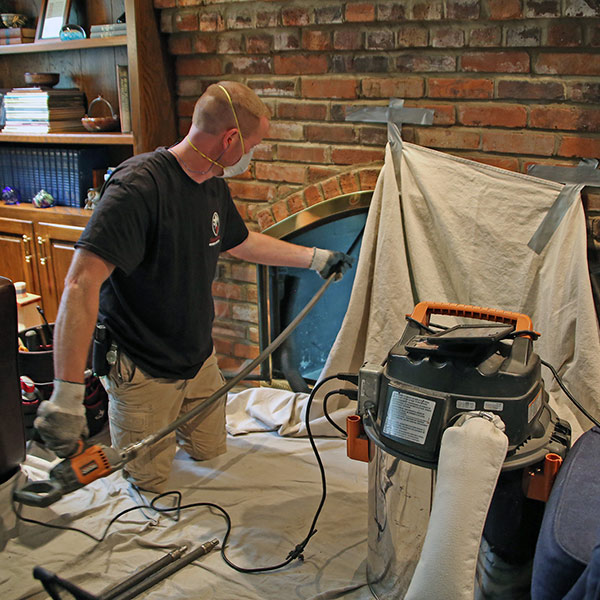Gas & Woodburning Fireplace Smells

It’s that time of year again when humidity is high and so are the smells. Wood burning fireplaces as well as gas fireplaces can produce a musty smell, dusty smell or even a smokey smell. If you usually get a chimney sweep or a fireplace cleaning in the Fall, you may want to reconsider.
Working out in the yard today, a neighbor came to the fence looking stressed and had a light shade of olive green on his face. It certainly caught my attention. I didn’t need to speak any words as my concern was enough. “I can’t take it anymore! The smell in the house is so bad! I tried to open the windows, but the smell only got worse!” The exclamation points are necessary.
My neighbor has a wood burning fireplace and usually waits until the Fall season to get the chimney cleaned and inspected. The house has the bad barbeque smell from months of fireplace use, compounded by humidity. The creosote built up inside the lining of the chimney causing it to give off the burnt-like smell. When he opened the windows, it caused the smell to get worse. Now that the windows are closed again, the smell is trapped inside and caused my neighbor and his family to become nauseous.
Bad Barbeque Isn’t the Only Smell
There are other types of smells that form from rain and humidity.
- Leaves – the smell of something rotting or decomposing can mean there’s debris or leaves in the chimney. A chimney cap or repairing the loose chimney cap may fix that problem.
- Animals – dead animal smell is certainly unpleasant in the home. Sometimes is their ‘droppings’ mixed with rain and humidity that can cause the unpleasant smell.
- Water – there’s that musty smell again, this time it could mean that water is in your chimney. Allowing water to enter the chimney can cause future repairs to the flue lining and other areas of the chimney. A check at the chimney cap or replacing it with a new one may help.
I’m sure my neighbor will be back to tell me the result of the technician from Superior Chimney cleaning and inspecting the chimney and fireplace. I hope this time I can see a color that is not green.
Stay ahead of the smells and call Superior Chimney today at 877-244-6349.
This post first appeared on https://www.superiorchimney.net
 Fire Hazards
Fire Hazards Masonry Destruction
Masonry Destruction
 Whether the seller or you as the buyer arranges it, the chimney must be inspected. In fact, in most jurisdictions, it is the law. The inspection should be done by a CSIA-certified (Chimney Safety Institute of America) technician, not a common home inspector.
Whether the seller or you as the buyer arranges it, the chimney must be inspected. In fact, in most jurisdictions, it is the law. The inspection should be done by a CSIA-certified (Chimney Safety Institute of America) technician, not a common home inspector. A poorly drafting chimney can make fires hard to start and maintain. It also can send smoke back into the house. Carbon monoxide, which is present in varying amounts in combustion smoke, can be fatal to humans and pets. Certified chimney sweeps have the tools and equipment to clean your chimney thoroughly and prevent excess creosote and air-flow problems.
A poorly drafting chimney can make fires hard to start and maintain. It also can send smoke back into the house. Carbon monoxide, which is present in varying amounts in combustion smoke, can be fatal to humans and pets. Certified chimney sweeps have the tools and equipment to clean your chimney thoroughly and prevent excess creosote and air-flow problems. Placement
Placement The purpose of a chimney, of course, is to accommodate combustion fumes as they rise up and out of the home. If the chimney is the wrong height, however, the draft can be negatively affected. The chimney top clearance formula is simple. The chimney peak should extend 2 feet higher than anything within 10 horizontal feet.
The purpose of a chimney, of course, is to accommodate combustion fumes as they rise up and out of the home. If the chimney is the wrong height, however, the draft can be negatively affected. The chimney top clearance formula is simple. The chimney peak should extend 2 feet higher than anything within 10 horizontal feet. ASH DUMP
ASH DUMP CHIMNEY CROWN
CHIMNEY CROWN FLUE
FLUE Creosote
Creosote Masonry damage
Masonry damage
